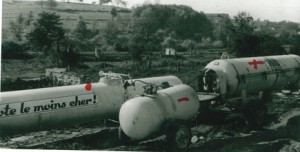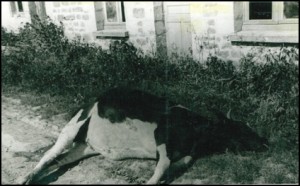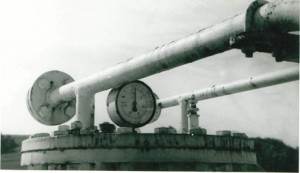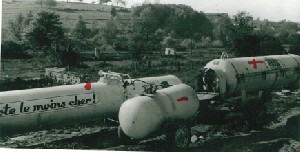In a farm courtyard on the outskirts of a village, a liquid ammonia (NH3) hose broke during the transfer of a fixed tank (7.2 m³) to a mobile cistern (3.7 m³). Since the outdoor temperature was 24°C, the pressure level neared 8 bar; 7,000 litres of anhydrous NH3 (i.e. 4 tonnes) spread over the ground and evaporated, forming a whitish cloud fed by the leak for a full hour.
The farmhand, struck by the hose, was thrown 5 m in back of the main tank. Burned on the neck and left arm, he was also intoxicated and could not close the valve since his protective gear (mask and gloves) had remained in the tractor hitched to the trailer. Rather than retrieving his gear and then returning able to shut the valve, the farmhand ran into the village 150 m away to sound the alarm. Once the alarm was given, villagers headed to the neighbouring hills and higher ground; all 66 of them made their way to safety, though 5 suffered from exposure; the farmhand had to be hospitalised for 5 days.
The gas cloud fried all vegetation over a stretch 2 km long and 450 m wide; 40 ha of prairie were burned, as were 300 to 400 fruit trees and many vegetable gardens. 6 cows and family pets died; 10 other cows were slaughtered 2 days later.
Heavily eroded and in very poor condition (fabric decomposed in spots, the metal braid exposed and rusted, etc.), the 3.2-m hose broke at its end connection points and displayed a 4-cm burst hole mid-length.
This accident, due to inadequate maintenance, also underscored the need for effective worker training and the importance of individual protective gear when handling hazardous substances.
The professional installer revised the design of its NH3 farm installations (fence to protect depots, sufficient distance from population centres, etc.), in addition to its handling guidelines. The equipment was gradually replaced by new devices equipped with safety features in the event of a hose break (e.g. check valve).
Download the detailed report in .pdf format (441 Kb)








